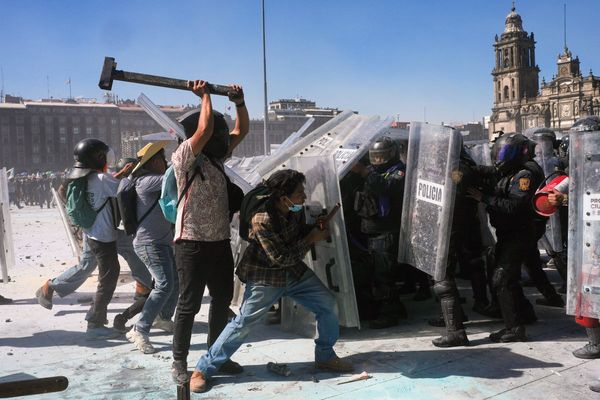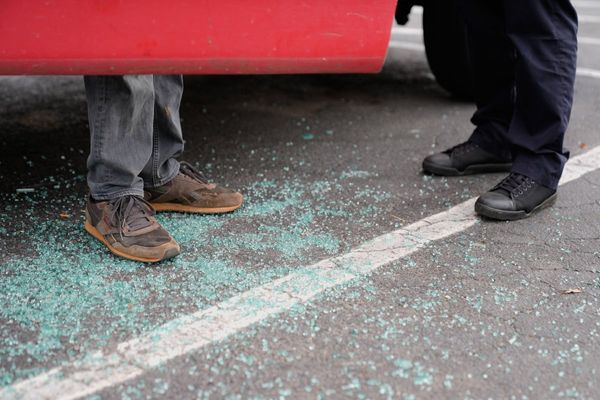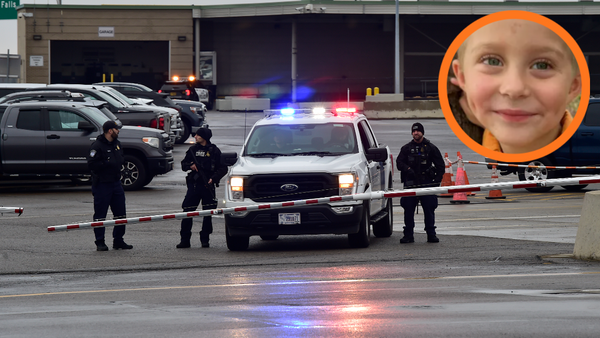
Big cities in California spent large portions of their federal Covid relief money on police departments, a review of public records has revealed, with several cities prioritizing police funding by a wide margin.
As part of the American Rescue Plan Act (Arpa), the Biden administration’s signature stimulus package, the US government sent funds to cities to help them fight coronavirus and support local recovery efforts. The money, officials said, could be used to fund a range of services, including public health and housing initiatives, healthcare workers’ salaries, infrastructure investments and aid for small businesses.
But most large California cities spent millions of Arpa dollars on law enforcement. Some also gave police money from the Coronavirus Aid, Relief and Economic Security (Cares) Act, adopted in 2020 under Donald Trump. The records show:
San Francisco received $312m in Arpa funds for fiscal year 2020 and allocated 49% ($153m) to police, 13% ($41m) to the sheriff’s department, and the remainder to the fire department, according to the city controller. San Francisco also gave roughly 22% ($38.5m) of its Cares funds to law enforcement.
Los Angeles spent roughly 50% of its first round of Arpa relief funds on the LAPD, according to a public records request by the controller candidate Kenneth Mejia, and first reported in local news site LA Taco.
Fresno spent $36.6m of its Cares funds on the police, making up 67% of Cares spending on city salaries, and roughly 40% of all of Fresno’s Cares funds.
San Jose allocated roughly $27.8m of its Cares and Arpa funds to police salaries and the police dispatch department, representing about 12% of its relief money.
Long Beach allocated the majority of its $135.8 million Arpa funds to police, though a spokesperson said a detailed breakdown of funds was not available.
Oakland allocated $5m (13.5%) of its Cares funds to police salaries; Sacramento allocated $2.2m (2.5%) of Cares funds to police; and San Diego spent roughly $60.1m (64%) of its Cares funds on police in fiscal year 2020, and $52.6m (33%) in fiscal year 2021.
The budgeting and reporting process varies by city and is often opaque, making it difficult to compare and analyze how governments prioritized police and executed their budgets.
In Fresno, the city allocated more than double of its Cares money to police than it did to Covid testing, contact tracing, small business grants, childcare vouchers and transitional housing combined. Oakland’s police allocation was greater than the amounts spent on a housing initiative, a small business grant program and a workforce initiative. San Jose, meanwhile, spent significantly more on housing services and food programs than on law enforcement. And although Long Beach initially reported that it was allocating 100% of its Arpa funds to police, a spokesperson said $11.8m of those funds were now going to direct relief grants and that a portion was also supporting the city’s parks and marine departments.
Officials from Oakland and Anaheim both said that their Arpa awards were used as “revenue replacement” for their general fund, and said it was not possible to specify where the federal money went (though both cities typically spend large portions of their overall budgets on police, with Oakland going $22m over budget last year). A Bakersfield representative said $13.6m in Cares funds went to public safety, but did not specify how much of that went to police.
Cities have explained their spending on police in a number of ways. In a report for the US government, Long Beach said police were “heavily involved in the City’s Covid-19 response”, including opening an emergency operations center and providing security at testing and vaccination sites.
Stephen Walsh, Oakland’s controller, said that claiming Cares funds for the police was an “accounting strategy” and that the relief money wasn’t used to expand law enforcement, but rather to avoid cuts. He said this allowed the city to “pursue a great variety of worthy projects directed at Covid relief”. A spokesperson for the LA controller also said the Arpa funds were used for LAPD revenue that had previously been budgeted, and a representative for the LA city administrative officer said allocations for “public safety services” were “consistent with the intent of the funds”.
Hillary Ronen, a member of the board of supervisors in San Francisco, noted that there were minimum staffing needs for the fire department and police, and that Covid cases in those departments forced cities to spend large amounts on public safety overtime. But she also said she appreciated the criticisms of the law enforcement allocations and that she wanted to see San Francisco invest in alternatives to police: “Over time, I do hope to shrink the budget of the police department.”
Cities using relief funds for police have typically funneled the money to salaries, although The Appeal recently reported that some jurisdictions were using stimulus dollars to buy new surveillance technology and build new prisons.
‘Cities hide their police spending’
The data in California matches national trends. After the George Floyd uprisings sparked a national debate about the role of law enforcement and calls for the US to “defund the police” and reinvest those dollars in services, local governments across the US used Covid relief to maintain and expand law enforcement, including Chicago, Philadelphia and the state of Alabama. Meanwhile, the pressure to invest more in police is growing amid a rise in homicides and other crimes, even as the crime rate remains significantly lower than previous decades.
The significant stimulus spending on police reflects the longstanding budget priorities in the US, where police spending has tripled over the last 40 years, with cities spending an increasing portion of their general funds on officers. Arpa allowed cities to replace lost revenue, so many of them funneled the relief to the agencies that previously received the most money.
But in California, a state with severe income inequality and a dramatically worsening homelessness crisis, the stimulus spending has sparked backlash from community organizers who argue that the funds should have gone directly to civilians and that police should have accepted cuts.
“It was called the ‘American Rescue Plan’, but you’re telling me that what needed to be rescued was the police department?” said Stephen “Cue” Jn-Marie, a pastor and activist at Skid Row in LA. “The city’s kneejerk reaction is always to use law enforcement to respond to everything … and the police forces keep getting larger.”
“When the money is going toward law enforcement again, it’s just increasingly criminalizing those that need the most help,” said Hope Williams, an activist in San Francisco, referencing the escalating police crackdown on unhoused people suffering from addiction in the city. Williams, who has sued the police department over its treatment of protesters, added, “It’s exhausting and infuriating, but not surprising.”
James Burch, policy director at the Anti Police-Terror Project, a coalition that organizes against police violence in Oakland, said it was frustrating how hard it was to get basic information on stimulus spending: “Cities like Oakland do everything they can to hide how much money they spend on policing, because if the public truly knew how much we spend on police and how little we spend on services, they would be infuriated.”
In LA, the Arpa spending plan was not publicized until Kenneth Mejia, an accountant and advocate running for controller, filed a public records request with the current controller. Some other cities’ public reports have not directly mentioned police at all, categorizing the expenditures under “government services” or “payroll”.
“It’s shocking and not at all transparent,” said Mejia, who has also uncovered how cannabis business taxes go to police. He further noted that LAPD was getting the funding at a time in 2021 when many of the department’s employees were declining to get vaccinated, with officers routinely caught on camera refusing to wear masks. “A city’s spending is representative of a city’s values … and you think that Covid relief money is going to help people, but it’s not. It’s going to police.”







